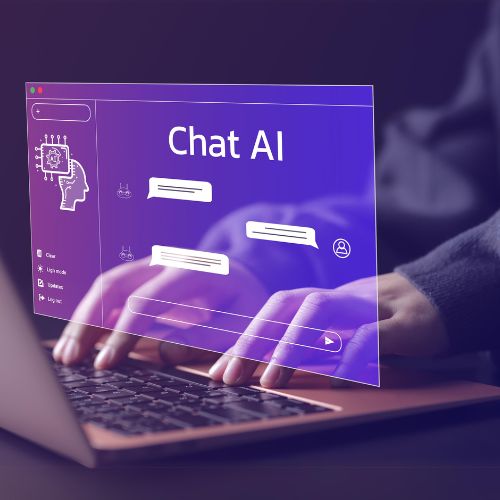
How Artificial Intelligence is Changing the Learning Experience
Artificial intelligence (AI) is revolutionizing the way we learn, transforming education from a one-size-fits-all approach to a more personalized, dynamic, and efficient experience. From AI-driven tutoring systems to intelligent content delivery, AI is making education more accessible and effective for students of all ages. This blog post explores the many ways AI is reshaping the learning landscape, offering insights into its current applications and future potential.
1. Personalized Learning Paths
Overview: AI tailors learning experiences to the unique needs and pace of each student, offering personalized feedback and resources.
Key Benefits:
- Customized Instruction: AI algorithms analyze a student’s strengths, weaknesses, and learning preferences, adjusting content to meet their specific needs.
- Adaptive Learning Systems: These systems dynamically adjust the difficulty level of exercises and provide targeted support based on real-time performance.
- Student Empowerment: Learners can move at their own pace, revisit difficult topics, and skip ahead if they’ve mastered a concept, making education more flexible and self-directed.
Example: Platforms like Khan Academy use AI to offer personalized recommendations, guiding students through math lessons by providing extra practice where needed and accelerating them through mastered concepts.
2. Intelligent Tutoring Systems
Overview: AI-driven tutoring systems offer on-demand support to students, simulating one-on-one instruction.
Key Benefits:
- 24/7 Access: AI tutors are available anytime, allowing students to receive help outside of regular class hours.
- Instant Feedback: AI tutors provide immediate corrections and explanations, helping students learn from their mistakes as they go.
- Scalability: Unlike human tutors, AI can serve millions of students simultaneously, making tutoring more accessible and affordable.
Example: Systems like Carnegie Learning’s AI-driven tutor in math not only correct mistakes but also explain why the mistake was made, helping students understand the underlying concepts better.
3. AI-Powered Assessments
Overview: AI makes assessments more efficient and insightful, from automating grading to providing in-depth performance analytics.
Key Benefits:
- Automated Grading: AI can grade multiple-choice, short-answer, and even essay questions quickly and consistently, saving educators time and reducing bias.
- Data-Driven Insights: AI tracks student progress over time, identifying patterns that can help teachers intervene when students struggle or accelerate those who are excelling.
- Instant Feedback for Students: Immediate grading allows students to quickly understand their mistakes and improve without waiting for teacher evaluations.
Example: AI tools like Gradescope use machine learning to grade assignments more efficiently, freeing up teachers’ time for more personalized instruction.
4. Intelligent Content Delivery
Overview: AI can create and deliver learning materials based on the needs of individual students or entire classrooms.
Key Benefits:
- Dynamic Content Creation: AI can generate quizzes, practice questions, or additional reading materials on the fly, ensuring that students get the right content at the right time.
- Customized Learning Materials: AI can analyze a student’s progress and provide tailored resources, such as videos, articles, or interactive exercises, to reinforce learning.
- Engagement: By keeping content relevant and appropriately challenging, AI helps maintain student engagement and interest in the material.
Example: Squirrel AI in China is known for generating personalized learning content and adapting teaching materials to suit individual students’ learning trajectories.
5. Automating Administrative Tasks
Overview: AI is not only transforming teaching and learning but also making administrative tasks more efficient.
Key Benefits:
- Time Savings for Educators: AI can automate repetitive tasks like grading, scheduling, and responding to frequently asked questions, giving teachers more time to focus on instruction.
- Improved Communication: AI-powered chatbots can answer students’ administrative queries, such as those about deadlines or course materials, quickly and accurately.
- Streamlined Operations: AI helps in managing student data, tracking attendance, and generating reports, reducing the workload for school administrators.
Example: Chatbots like Georgia Tech’s “Jill Watson,” which was created using IBM’s Watson AI, answer student questions about the course, saving instructors significant time.
6. Virtual Teaching Assistants
Overview: AI-powered virtual assistants are becoming an integral part of the classroom, helping teachers manage tasks and provide more individualized attention to students.
Key Benefits:
- Real-Time Support: Virtual assistants can answer student questions in real-time, providing help when the teacher is not immediately available.
- Data-Driven Suggestions: These assistants can analyze student performance data and recommend interventions or additional resources to help students who are falling behind.
- Efficiency: By handling administrative tasks like attendance or grading, virtual assistants free up teachers to focus on more complex instructional tasks.
Example: Digital assistants like IBM’s Watson can act as teaching assistants, helping with everything from grading to answering students’ questions.
7. AI in Special Education
Overview: AI can help create more inclusive learning environments by adapting to the unique needs of students with disabilities.
Key Benefits:
- Tailored Instruction: AI can provide personalized learning experiences for students with special needs, adapting lessons and providing real-time assistance.
- Accessibility: AI-powered tools like speech-to-text or text-to-speech applications make learning materials more accessible for students with visual or auditory impairments.
- Social and Emotional Learning: AI can also support students with developmental disorders, helping them practice social interactions or navigate everyday challenges in a controlled environment.
Example: AI tools like the No Isolation robot help students who are unable to attend school due to illness stay connected with their classmates through virtual participation.
8. Language Learning and AI
Overview: AI-powered tools are revolutionizing language learning by offering personalized lessons, instant feedback, and speech recognition technologies.
Key Benefits:
- Speech Recognition: AI can analyze a student’s pronunciation and offer immediate feedback to improve language skills.
- Interactive Learning: AI enables students to engage in conversational practice with virtual tutors, helping them build confidence and fluency in new languages.
- Cultural Immersion: Some AI platforms offer virtual reality environments where students can practice language skills in culturally rich, realistic settings.
Example: Duolingo uses AI to adapt lessons to each learner’s skill level, providing personalized language learning paths that adjust as the student progresses.






